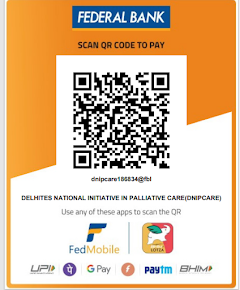Random
Thoughts on WHO’s World No Tobacco Day
Today is WHO’s World No Tobacco Day.
What we can do? First question of many people
followed with an additional thought “it is for the Government to ban Tobacco
selling”.
We as volunteers of DNipCare see many badly suffering patients
with oral cancer struggling at the fag end of their lives and tobacco played
major role to reach them here.
So what about our Individual Social Responsibility? Can’t we just interact with our domestic
servants, rikshaw pullers, auto drivers and even friends and fellow employees
to find out whether they are using tobacco or not? Then try to explain the dreadfulness waiting If they continue; give alternate
options like eating frugal wet or dry Dates which will not only subside hunger
but add up to their good health.
99 of the hundred we interact may not listen
or agree to. No need to loose heart, the
one listened will get reformed and spread the message in the interest and well
being of humanity. Let us say No to Tobacco and Kill the Cancer Before it Kills
Us.
kv
hamza,
General
Secretary, DNipCare
9891008356
Huge health burden
Editorial : The Hindu Dated 4th June 2014
Huge health burden
Editorial : The Hindu Dated 4th June 2014
That over 27 per cent of tobacco consumers in India fall in the 15-24 year age bracket amply demonstrates how successful the tobacco companies have been in continually enticing the vulnerable sections of the population into the suicidal practice. The addition of new customers every year even as thousands of patrons die annually ensures that the tobacco companies’ customer base remains wide and tall. If the global tobacco-related mortality is
about 5.5 million people annually, India’s burden alone is nearly one million. With nearly 35 per cent of the adult population in the country addicted to the dangerous substance rolled in paper or leaf or packed in plastic sachets, India is the second largest consumer of tobacco products in the world. Besides the high levels of mortality and morbidity, there is a huge economic cost involved in treating people with diseases caused directly or indirectly
by tobacco use. As a result, the out-of-pocket expenditure on medical treatment results in “higher poverty rates.” A recently released Health Ministry report estimates that 9.3 lakh people in India are affected by the health costs of tobacco. According to the report, the total health expenditure burden of tobacco in the year 2011 was a little over Rs.100,000 crore. To put it in perspective, the amount was “12 per cent more than the combined State and central government expenditure on health in 2011-12.” The revenue earned
through excise duty in the same year was a paltry 17 per cent of the health burden of tobacco. The “benefit” argument of revenue generation through sales therefore stands completely negated.
It is for these reasons that the Central government, which considers health to be one of the priority areas, should simultaneously implement multiple strategies to prevent people, particularly children as young as 15 years, from getting addicted to nicotine and help the existing users to quit smoking and/or chewing tobacco. If the government is indeed serious about reducing the prevalence by 15 per cent by 2020 and 30 per cent by 2025, the most
effective way of achieving it is by raising taxes. It is indeed heartening that the new Union Health Minister “supports” higher taxes on cigarettes and tobacco products; raising tax on tobacco is the WHO’s theme this year. But for any tax increase to become effective, the price difference between various brands and different tobacco products must be minimal. But India follows a bizarre, producer-friendly excise duty structure for cigarettes, beedis and chewing
tobacco that makes a mockery of taxation. Hence, a complete overhaul of the taxation system is warranted to achieve the desired benefits. It is time the tobacco issue was addressed with greater seriousness.




No comments:
Post a Comment